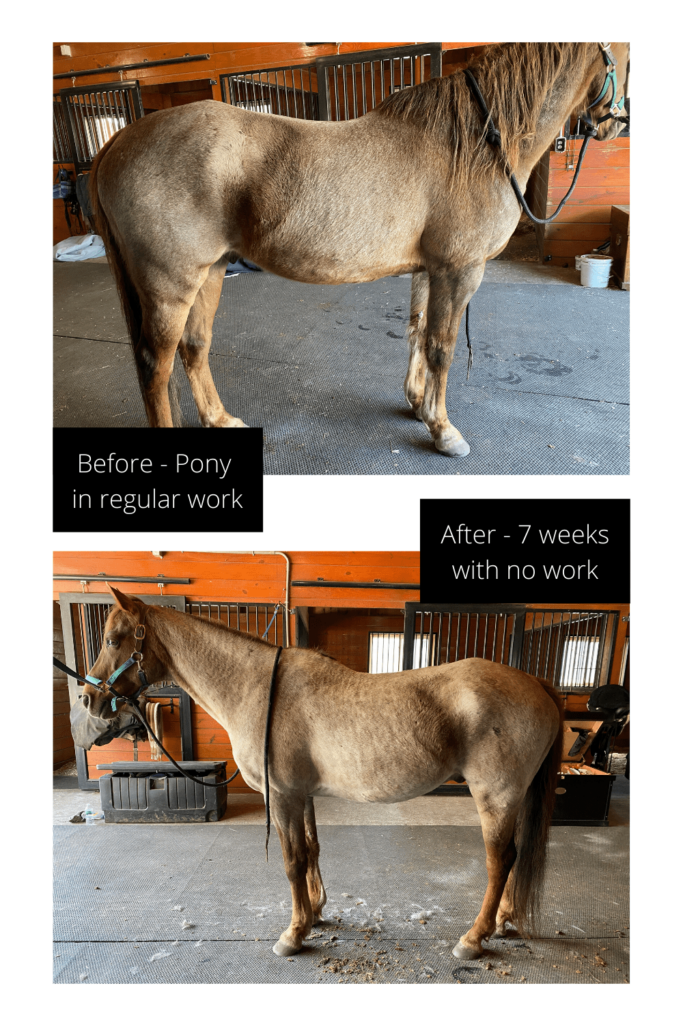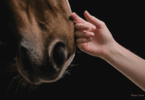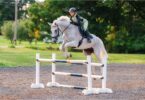Restarting your horse after an extended time off
In light of many countries starting to lift their COVID-19 restrictions, Louise, Heather, and I put together an episode of the Equestrian Pulse about important considerations for bringing your horse back into work. You can listen to the episode here. While I have been lucky enough to keep Nonie in full work during COVID-19, both Louise and Heather have had to stop working and seeing their horses.
I also wanted to share some of the key points that you should take into consideration when bringing your horse back into work, whether from a COVID-related riding ban (fingers crossed there will never be another one of these), rehabbing your horse, or just bringing them back from a longer holiday.
Note: The information shared in this post is general in nature and you should always consult your vet or another qualified professional about how to best proceed with your horse.
Before you saddle up
Before you even think about buckling up your girth there are several boxes that need to be ticked:
- Ensure that your horse is ready for work. This includes being up to date with their hooves (trimmed or shod) and dental work.
- Have your horse checked over by your physio or body worker. This will help to make sure that there are no niggles or problems within your horse’s body. Of course if you are rehabbing your horse make sure you are doing this under the guidance of your vet.
- Have your saddle fit checked. Along with fitness your horse will have lost muscle, particularly along their topline. Heather, who is a saddle fitter and body worker, explained that there is often a lot that you can do to adjust the fit of your saddle. For instance, by adding shims into a saddle. However it is important that this be done under the guidance of a qualified professional as getting it wrong can negatively affect the balance of the saddle or create pressure points.

Heather’s pony Ferrous. The top photo shows his condition when in regular work, the bottom photo shows the loss of muscle after a 7 week break due to COVID lockdown. Of note are the changes through his topline and gluteal muscles.
Getting back to work
Once you have checked all of these boxes, you are ready to get to work! But don’t saddle up just yet. When out of work for extended periods your horse will have lost a significant amount of fitness and strength.
For this reason it is vitally important to go slow and steady. It may be prudent to start with in-hand work initially. This will help to reduce the risk of you overdoing it in the early days, as well as allowing your horse a chance to regain some strength through their topline without the added challenge of a rider.
Equestrian South Australia (1) say,
“Despite the increased ‘spark’ the horse may have after a break, it is important to remember that significant fitness will have been lost during the time off, and exercise needs to be introduced slowly to avoid any injuries occurring in the early stages of training.
Long slow distance work for the first four to six weeks is advised, to strengthen not only the horse’s musculoskeletal system but also to promote cardiovascular and respiratory health. Long slow distance work is essential for aerobic conditioning and especially important for disciplines where the horse is worked over a long period of time, such as
dressage or endurance.”
The recommendations suggest 4-6 weeks of just walk work (in straight lines). You should start with short rides and build up gradually. After this you can start to introduce some trot work and then canter again sticking to straight lines. The last aspect to reintroduce is discipline specific work for instance
Some people like to include longeing however this should be done with caution. Longeing is a repetitive motion that can increase the strain on delicate ligaments and tendons and can be detrimental to joint health. This is due to the fact that the whole time you longe your horse is turning which causes their body to be unevenly weighted. For more detail check out this great article from The Horse.
Introducing hill work can also be extremely beneficial. Your horse will automatically have to engage their hindquarters and ‘track up’. It will also help develop cardiovascular fitness (think about how much harder it is to walk up a flight of stairs than along the flat). (2)
I also found this video series from Petplan to be super helpful
Safety first
There are some additional factors that should be taken into account to ensure your safety. First and foremost it goes without saying that a helmet should be part of the equation. As it should be any time you swing your leg over the saddle.
Another important consideration is to have a spotter, particularly if like my co-host Louise you know that your horse can come back into work on the fresh side. Or perhaps you are a newer equestrian or have had a previous bad experience and are feeling nervous.
Having a support person will give you the flexibility of an extra set of hands, from someone to hold your horse whilst you get on, to the security of having a ground person around.
Manage your restart recovery expectations
When bringing Nonie back into work after a week or two off, I know that it is vital for me to manage my expectations. Knowing the amount of fitness and strength we both have lost, I am mindful that we won’t simply be able to pick back up where we left off.
A coach several years ago told me that, as a rule-of-thumb, it takes twice as long to get your horse back to where they were pre-break as the amount of time that they had off. So if your horse had two weeks off, plan for it to take four weeks (at least) to get back to where you were.
I have found that this timeframe is helpful for helping me to establish realistic expectations and goals, but of course like anything with horses, it is important to be flexible!
P.S. Enjoy this article? Trot on over to:
- 5 Hardy Horse Breeds with the Longest Lifespans
- Arabian Horse Lifespan 101
- Horse Conformation Terminology Made Simple
- Pony Lifespan 101
- Horse Rookie’s Monthly Horse Expense Reports
- 60 Questions to Ask When Buying the Horse of Your Dreams
- Parts of the Horse Quiz: Can You Name Them All?
- You CAN Do This: Trailering a Horse for the First Time
- How to Ride a Horse for Beginners (Basics, Safety, Mistakes)
- What to Wear Horseback Riding (With Pictures)
- Why Some Horse Wear Shoes (And Others Don’t)
References:
- Equestrian South Australia (2014). Feeding and exercise management after a spell.
- Sophie Barker 2020 for FEI. 4 benefits of millwork for horses.







